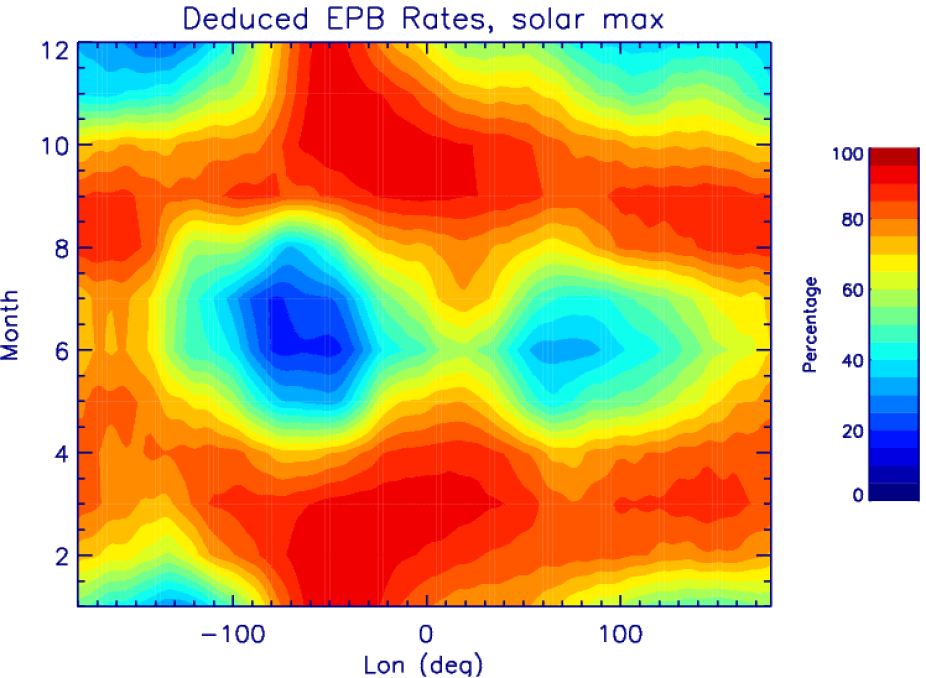Publication Name: Space Weather; First HAO Author's Name: Han-Li Liu
This work reveals the pathway through which the lower atmosphere impacts the ionosphere weather at mid and low latitudes. An interesting ionospheric phenomena at low to mid-latitudes is the development of the so-called equatorial plasma bubbles (EPBs)--the rapid depletion of plasma density during night time.

Monthly EPB occurrence rate, obtained from daily EPB occurrence rate, which is in turn deduced from the maximum PRE using an empirical relation.
Although there is consensus on the direct cause of the EPBs (gravitational Rayleigh-Taylor instability), it has been puzzling for decades why EPBs occur during some nights and at some longitudes but not others. Previous research has focused mostly on possible "seeding" by small-scale gravity waves, as well as variability in solar and geomagnetic forcing. The novelty of this work is that it demonstrates the large-scale dynamics from the lower atmosphere strongly modulates the ionospheric electrodynamics, including the pre-reversal enhancement (PRE) of the vertical plasma drift around dusk, which in turn controls the post-sunset EPBs.
Since EPBs adversely impact radio communications and Global Positioning System (GPS), they are a major space weather concern at low and mid-latitudes. By connecting their major driver, namely PRE, to large-scale dynamics of the lower atmosphere, this work shows the feasibility of forecasting EPBs using a physics-based whole atmosphere model and information from the lower atmosphere measurements.